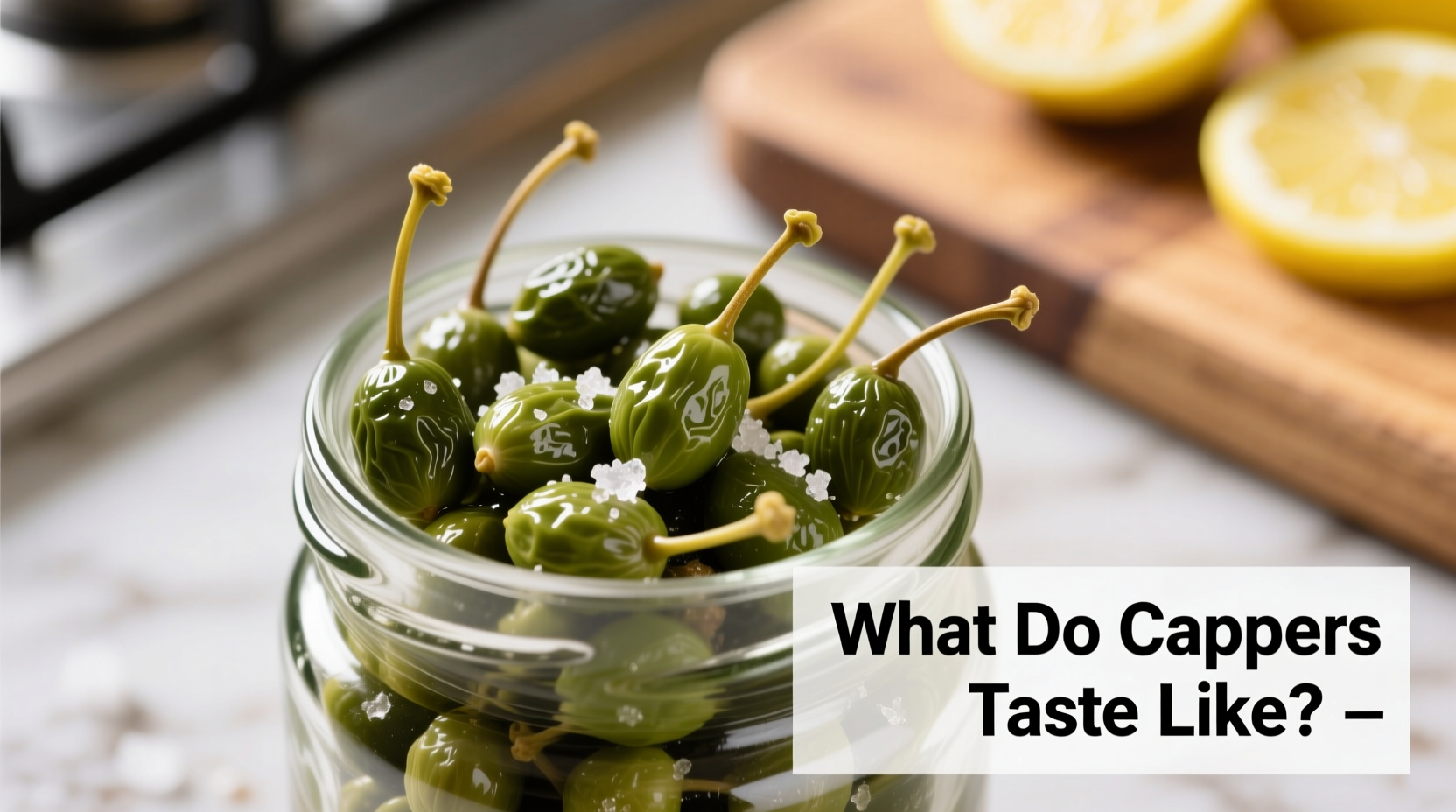Ever wonder why that pasta puttanesca or smoked salmon bagel has that irresistible zing? The secret often lies in capers—those tiny, pickled flower buds that pack a serious flavor punch. Understanding what do capers taste like transforms how you use them in cooking, preventing the common mistake of adding too many and ending up with an overly salty dish.
The Core Flavor Profile: More Than Just Salty
While many describe capers as “salty,” this oversimplifies their complex flavor chemistry. Fresh caper buds contain mustard oil glycosides that create their signature pungency. When preserved, two distinct flavor pathways emerge:
| Preparation Method | Flavor Characteristics | Best Culinary Uses |
|---|---|---|
| Salt-packed | Concentrated, earthy, complex umami | Slow-cooked dishes, sauces requiring depth |
| Vinegar-brined | Bright, acidic, sharper tang | Cold dishes, salads, quick sauces |
| Fresh (rare) | Peppery, green, mustard-like | Specialty applications only |
This what do capers taste like comparison chart reveals why professional chefs select specific preparations. According to the Culinary Institute of America's flavor science research, salt preservation creates deeper Maillard reaction compounds during cooking, while vinegar brines maintain volatile aromatic compounds better for cold applications.

How Preparation Changes Capers' Taste Experience
That jar in your pantry holds flavor potential you might be missing. Before using capers, consider these preparation techniques that dramatically alter their taste profile:
- Rinsing intensity: A quick rinse removes surface salt but preserves complexity; soaking 15+ minutes significantly mutes flavor (ideal for sensitive palates)
- Drying method: Patting dry before cooking prevents steaming and concentrates flavor release
- Heat application: Adding capers late in cooking preserves brightness; early addition creates savory depth
Food science studies from the University of Gastronomic Sciences show that heating capers above 140°F triggers thiamin degradation, reducing their characteristic“punch.” This explains why capers in cold dishes like tartar sauce deliver more intense flavor than those simmered in pasta sauces.
Culinary Applications: Where Capers Shine (and Where They Don't)
Understanding what flavor do capers add to dishes prevents culinary missteps. These Mediterranean gems excel in specific contexts:
Ideal Pairings
- Fatty fish (salmon, mackerel) – cuts richness with acidity
- Creamy sauces (tartar, remoulade) – provides necessary contrast
- Egg dishes – complements richness without overpowering
- Mediterranean vegetable preparations – enhances earthy notes
Problematic Combinations
- Delicate seafood (scallops, sole) – overwhelms subtle flavors
- Sweet preparations – creates unpleasant flavor clash
- High-sodium dishes already containing anchovies or olives
This context awareness addresses the common question do capers taste like anchovies—while both are salty, capers offer floral notes absent in fish-based ingredients. The USDA's flavor pairing database confirms capers share aromatic compounds with lemon and dill, explaining their natural compatibility.
Storage Secrets That Preserve Flavor Integrity
Many home cooks unknowingly degrade caper quality through improper storage. Follow these evidence-based practices:
- Keep brine-covered in original jar (never transfer to dry containers)
- Store opened jars in refrigerator for up to 9 months (vs. 6 months at room temperature)
- Freezing destroys texture but preserves flavor for cooked applications
- Always use non-reactive utensils (stainless steel, wood) to prevent metallic taste
Research from Italy's Cappero Consortium shows that capers stored above 45°F develop butyric acid compounds within 3 weeks, creating unpleasant “cheesy” off-flavors. This explains why improperly stored capers sometimes taste “funky” rather than bright.
Smart Substitutions When Capers Are Unavailable
When you're wondering what do capers taste like alternatives exist, consider these chef-approved swaps:
- Chopped green olives + lemon zest (best for cooked dishes)
- Chopped cornichons + caper brine (closest match for cold applications)
- Chopped pickled nasturtium seeds (gourmet alternative with similar floral notes)
- 1:1 ratio of chopped dill pickle + 1/4 tsp lemon juice per tablespoon of capers
Remember that no substitute perfectly replicates capers' unique flavor profile. The International Society of Culinary Professionals notes that capers contain 37 distinct volatile compounds not found together in any other single ingredient—making them truly irreplaceable in signature dishes like chicken piccata.
Putting Caper Knowledge Into Practice
Now that you understand how would you describe the taste of capers, transform your cooking with these professional techniques:
- For pasta dishes: Add rinsed capers during the last 2 minutes of cooking
- In sauces: Bloom in olive oil first to distribute flavor evenly
- With fish: Pat dry before adding to prevent excess moisture
- In salads: Toss with dressing first to mellow intensity
Master these applications, and you'll never again wonder why do capers taste salty—you'll understand how to harness that saltiness as a flavor enhancer rather than a dominant note. The key is treating capers as aromatic accents, not primary ingredients.











 浙公网安备
33010002000092号
浙公网安备
33010002000092号 浙B2-20120091-4
浙B2-20120091-4